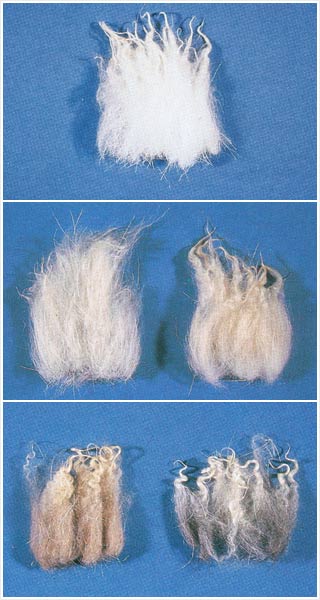The History and Perks of cashmere in Creating Luxurious Clothing
The History and Perks of cashmere in Creating Luxurious Clothing
Blog Article
Discover the Attraction of Cashmere an All-natural Fiber: Why It's a Must-Have in Your Closet
The appeal of cashmere, a luxury natural fiber, goes beyond simple appearances. Originating from the Kashmir region, this light-weight yet sturdy material has actually woven its method right into high-end fashion as a result of its one-of-a-kind residential or commercial properties and versatile allure. From reviewing its intriguing beginning to recognizing its manufacturing process, care, and high quality, it's worth exploring why cashmere holds such an unique place worldwide of textiles. Discover the elegance and material of this fiber as we begin on an exploration of its attraction.

The Beginning and Background of Cashmere: A Quick Introduction
While lots of may check out cashmere as a basic luxury, its background is soaked in abundant social custom. Stemming from the Kashmir area in India, cashmere wool has actually been produced for countless years. The fiber is acquired from the soft undercoat of cashmere goats, harvested during their molting season. As a priceless product, it was traded along the Silk Road, coming to be highly valued in Europe in the 18th century. The name 'cashmere' is an old English derivation of Kashmir. Despite its international popularity, the bulk of cashmere production still continues to be in Asia, particularly China and Mongolia. This historical journey highlights the cultural significance of cashmere, changing it from a regional specialty to a global deluxe.
Understanding the Special Qualities of Cashmere Fiber
While other products might put on down over time, cashmere retains its quality, guaranteeing long-lasting wear. Cashmere possesses an one-of-a-kind visual allure. Comprehending these properties clarifies why cashmere is not simply a deluxe, but a beneficial financial investment for any kind of closet.

The Process of Making Cashmere: From Goat to Garment
To appreciate the elegant homes of cashmere fully, one must understand its trip from the raw fiber to the ended up item. The process begins with the cashmere goats, mostly found in Mongolia, China, and Iran. The soft undercoat of these goats, harvested throughout their natural molting season in spring, gives the raw product. This delicate fiber is after that very carefully separated from the coarser outer hair in a labor-intensive procedure known as dehairing. The pure cashmere is after that dyed, rotated right into yarn, and ultimately knitted or woven right into the desirable garments. Each action is diligently carried out to click now maintain cashmere's notable heat, gentleness, and sturdiness. This detailed process leads to the development of a truly lavish textile.

Decoding the High Quality and Rate: Why Is Cashmere so Expensive?
The steep price of cashmere garments usually leaves customers asking yourself concerning its justification. The expenditure stems mainly from the strenuous production process. is cashmere a natural fiber. Cashmere originates from the great undercoat of the cashmere goat, with each goat producing a simple 150 grams yearly. The labor-intensive procedure of brushing and collecting the unusual fiber dramatically increases the cost. The handling of raw cashmere calls for both time and proficiency, with the fibers needing to be find more info thoroughly sorted, washed, and spun. Moreover, the deficiency of pure cashmere, coupled with its superior softness, warmth, and resilience, validates its high-end condition and high cost. These factors combined make cashmere a pricy yet very desired asset on the planet of style.
Cashmere in Style: The Convenience and Ageless Appeal
Despite its high cost, the classic appeal and adaptability of cashmere have actually solidified its place in the realm of style. The functional nature of cashmere allows for its combination right into both casual and formal attire, representing its wide allure. As fads come and go, cashmere remains a constant, its attraction undiminished, continuing to inspire and shape the fashion sector's landscape.
Taking Care Of Your Cashmere: Maintenance and Preservation Tips
Guaranteeing the durability of cashmere garments needs certain treatment blog here and focus. These treasured possessions ought to not be tossed into the washing device with routine laundry. Instead, hand cleaning with mild, pH-neutral soap in warm water is encouraged. After cleaning, they must not be wrung out. Rather, they must be carefully pushed between towels to soak up excess water, after that laid level to completely dry. Routine brushing with a cashmere comb can avoid pilling. Storing these items in an awesome, dry place, preferably in a breathable bag, can protect them from moths and humidity (is cashmere a natural fiber). An occasional airing outside, away from straight sunshine, can freshen the fibers. With these maintenance and preservation tips, one can ensure their cashmere continues to be sturdy and luxuriously soft.
Final Thought
Cashmere, with its exceptional softness and heat, supplies both luxury and durability. Its beginning from the Kashmir region and thorough production process add to its high-end allure and expense. Its convenience in vogue and sustaining charm make it a worthy investment for any type of closet. With appropriate treatment and conservation, cashmere garments can last for years, offering a special blend of convenience, style, and top quality. Discover the allure of cashmere and boost your fashion collection.

Report this page